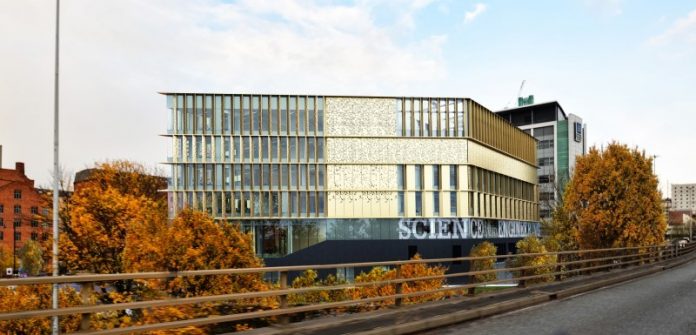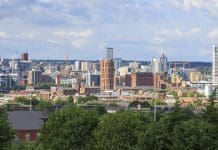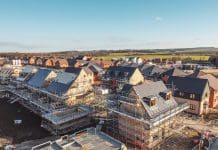A new state-of-the-art science and engineering building at Manchester Metropolitan University (MMU) has been given the green light
Manchester City Council’s planning and highways committee approved the new science and engineering building on 12 March.
The project will see the existing John Dalton West building demolished and a new, seven-storey academic building constructed in its place.
Demolition works are expected to begin at the end of 2020.
The multi-phase project will be situated on the land between the Mancunian Way, Chester Street, Oxford Road and Cambridge Street and will see the new science and engineering building connected to MMU’s current John Dalton Tower.
Space for substantial research growth
Vice-chancellor Professor Malcolm Press, said: “Our new Science and Engineering Building will provide a hugely improved environment for students and staff. This ensures we can offer courses and business support that reflect Manchester’s aspirations and address its future challenges, such as tackling climate change and teaching the knowledge and skills required for the next generation of industries.
“At the same time, it will provide space for substantial growth in our research, where we play a significant role in areas such as healthcare innovation, advanced materials and manufacturing, digital technologies and decarbonisation.”
The highly sustainable, low energy, living lab building will provide the Faculty of Science and Engineering with new teaching spaces, cutting-edge laboratories including a 200-seat superlab, academic offices, social and self-directed learning areas.
It will house the university’s 3D additive and digital manufacturing technology hub PrintCity and the Manchester Fuel Cell Innovation Centre, which is dedicated to developing green, clean and accessible power. There will be a new energy centre as well as extensive public realm works.
Professor Andrew Gibson, pro-vice-chancellor of the faculty of science and engineering at Manchester Metropolitan, said: “We are very much looking forward to the enhanced educational and research environment that the building delivers in terms of the social learning spaces, teaching rooms, IT suites, laboratories and even greenhouses.
“These facilities will help our important work in the fields of Industry 4.0, climate change, digital skills and innovation, sport and exercise sciences, and green technologies go from strength to strength, and will enable us to effect change in the region by sharing our world-class facilities and expertise with business, industry and policymakers.”
MMU estates masterplan
Turley provided planning, environmental impact, economics and strategic communications services for the project.
The science and engineering building is part of the university’s ambitious Estates Masterplan Investment Programme which is investing £378.8m to transform its campus over the coming years.
Managed by the university’s Capital Development team, the masterplan includes new buildings for Arts and Humanities, the School of Digital Arts and Birley Residences Phase 2, as well as refurbishments for the Ormond building and 99 Oxford Road, which will be an intrinsic part of the new Manchester Metropolitan University Institute of Sport.
The building is expected to welcome students and staff in 2023.














